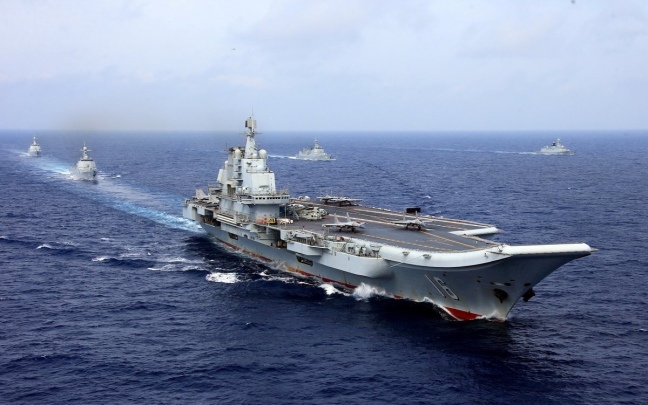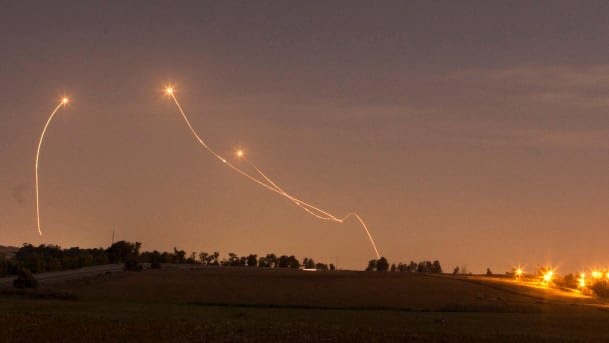Should China conquer Taiwan, that would free up about 50% of total PLA strength for potential deployment to the current Western Theater Command, facing India. So armed, a blitz to conquer Arunachal Pradesh could be a prelude to second punitive invasion blitz to Kolkata or even Delhi.
China’s savage 15 June 2020 attack against unarmed Indian troops was a classic example of Chinese style warfare: using the terrain to gain tactical advantage; exploiting longstanding diplomacy and agreements to disarm the Indian side; deliberately shock through use of brutal weapons not excluded from the same agreements; claiming the now blood-soaked Indian territory to sustain tension and fear; and then a propaganda barrage blaming India for causing the attack.
Understandably from the Indian perspective, there would be a desire to prevent this incident from sparking a larger, far more damaging, conflict. The inclination would be to treat the Chinese attack as another border incident, relying on diplomacy and better local deterrence to prevent future Chinese aggression. Unfortunately, there is a profound reality to China’s behaviour: to satisfy its hegemonic ambitions, the Chinese Communist Party (CCP) will require continuous concessions from India, diminishing its security, sovereignty and prosperity.
There is another hard reality. No matter what level of autonomy and non-alignment India pursues, for the CCP, India is but another on a list of democracies to be destroyed, and neighbours and enemies to be subordinated, in the CCP’s pursuit of global hegemony. A hint of the potential brazenness of CCP ambitions was revealed in a 2013 unauthored article widely circulated on the Chinese internet titled, “Six Wars China Must Fight in the Next 50 Years” . It was not removed by China’s internet censors and has held up well after seven years.
* “The First War: Unification of Taiwan (2020 to 2015)” states that by 2020 “an ultimatum” must be given to Taiwan, peaceful or non-peaceful unification, but as Taiwan is expected to be “defiant…military action will be the only solution.” Without United States’ “intervention,” Taiwan can be “under control” in three months.
Assessment: after 30 years of preparations, the People’s Liberation Army (PLA) could invade Taiwan successfully today if the United States was deterred, distracted, or defeated. The PLA has access to thousands of large river barges and 3,000 Western-built airliners that could carry the invasion forces. Following its conquest Taiwan will become a major base for PLA nuclear submarines, nuclear missiles, and global power projection forces.
* The Second War: “Reconquest” of the Spratly Islands (2025 to 2030) will be greatly assisted by China’s victory in the first, says the article. But South China Sea claimants who do not negotiate their access to resources with China will be attacked, starting with Vietnam. Consolidating control will ensure “Chinese aircraft carrier[s] can have free access into the Pacific Ocean”.
Assessment: This war is more than half won. China could easily double reclaimed areas in the Spratly and Paracel Island groups and thus double forward deployed missile, naval, air and Marine forces. If Vietnam, the Philippines, Malaysia, and Indonesia do not fold to CCP diktat, they could face punitive PLA Marine invasions. Control of South China Sea opens the Indian Ocean to PLA power projection.
* The Third War: “Reconquest” of Southern Tibet (2035 to 2040) cautions, “If China uses military force to conquer Southern Tibet, it has to bear some losses…the best strategy for China is to incite the disintegration of India…[that] will have no power to cope with China.” But failing that, “at least try its best to incite Assam province, and once conquered Sikkim, to gain independence.” It goes on, “The second best plan is to export advanced weapons to Pakistan, helping Pakistan to conquer Southern Kashmir region in 2035…while India and Pakistan are busy fighting each other, China should take a Blitz to conquer Southern Tibet…India will not be able to fight a two front war, and is deemed to lose both.”
Assessment: Should China conquer Taiwan, that would free up about 50% of total PLA strength for potential deployment to the current Western Theater Command, facing India. So armed, a blitz to conquer Arunachal Pradesh could be a prelude to second punitive invasion blitz to Kolkata or even Delhi. Provided they are not destroyed preemptively, India would have little choice but to use nuclear weapons on its territory to halt such an invasion. The “disintegrate India” option was mentioned again on 17 June 2020 on another popular Chinese web portal, Guancha.com.
Before having done so more recently for North Korea,
China long ago enabled Pakistan to become a nuclear missile state, complete with intermediate range, medium range, short range ballistic missiles and cruise missiles. The China-Pakistan Economic Corridor will help ensure the survival of the unstable and hostile military-dominated regime in Islamabad, as it will also ensure a future PLA naval and air base at Gwadar. So, if China is not able to dismember India, by the 2030s Beijing could have it strategically surrounded.
* The Fourth War: “Reconquest” of the Diaoyu Islands and Ryukyu Islands (2040 to 2045) notes, “The Japanese has robbed our wealth and resources in the East China Sea and unlawfully occupied Diaoyu and Ryukyu Islands for many years…At that time, we can expect that the U.S. will be willing to intervene but has weakened; Europe will keep silent; Russia will sit and watch the fight…The war can end within half a year…”
Assessment: It is interesting that the authors assume the US-Japan alliance survives the first three Chinese wars, but
there is no indication whether Japan has obtained nuclear weapons. But China’s ambitions to control the East China Sea are well established, and this would require control of the Ryukyu Island Chain and the departure of US forces from Okinawa. It is likely that China has long helped to stoke anti-Japanese government and anti-US military sentiments in Okinawa.
* Skipping the Fifth War: Unification of Outer Mongolia, let’s get to the real battle, The Sixth War: Taking back the lands lost to Russia (2055 to 2060). The article states, “The current Sino-Russian relationship seems to be a good one…China never forgets the lands lost to Russia. When the chance comes, China will take back the lands lost…Russia has occupied…equivalent to one-sixth of the current domain of China. Russia is therefore the bitter enemy of China.” It calls for “nuclear power to strike Russia from the front stage to the end” of the war, meaning Russia will be devastated by a full-out Chinese nuclear offensive.
Assessment: Informal sources indicate that Russia understands it is on China’s martial menu, but Vladimir Putin remains committed to an economic and military entente with China. Today Russia is signalling that it will contribute to China’s wars against Taiwan and Japan. Russian accommodation of China may even extend to a war against India, all to lengthen the period in which Russia can prepare for its China war. Of course, this would be a cynical miscalculation that could cost Russia most of Siberia. China will match Russian military technology, vastly outproduce it, and is already on its way to building a nuclear arsenal that could soon exceed that of Russia or the United States.
The Chinese article does not mention how China will conquer the United States, but that project is also underway. In 2019, China’s Defence Minister made clear that CCP leader Xi Jinping’s signature Belt and Road Initiative of global infrastructure and influence building is directly linked to China’s global military influence building. For most of the last 20 years, China has been building economic and political power in Latin America that could lead to military access. While President Donald Trump has made the most concerted attempt to mount a broad strategic and economic pushback against China, it is not clear whether his objectives will be shared by his successors and required strategic investments sustained.
However, there is a silver lining: India still has the time to make new strategic choices that can help prevent any of these wars from coming to pass. Short of a formal alliance with anyone, India can make common cause with all democracies that, like itself, are threatened by China.
For example, India can build sensor and intelligence sharing with Taiwan to help warn either of Chinese military movements that would threaten the other. Sensor sharing, military training and coordination with Japan, Australia, and the United States could go far to contain China’s threats to the First Island Chain and into the Indian Ocean. Joining the US and Western efforts to build a new government-private sector presence on the Moon can help thwart Chinese designs to control the Earth-Moon System. Finally, India can join other states in lobbying Russia to end its entente with China.
Richard D. Fisher, Jr. is a senior fellow with the International Assessment and Strategy Center.











